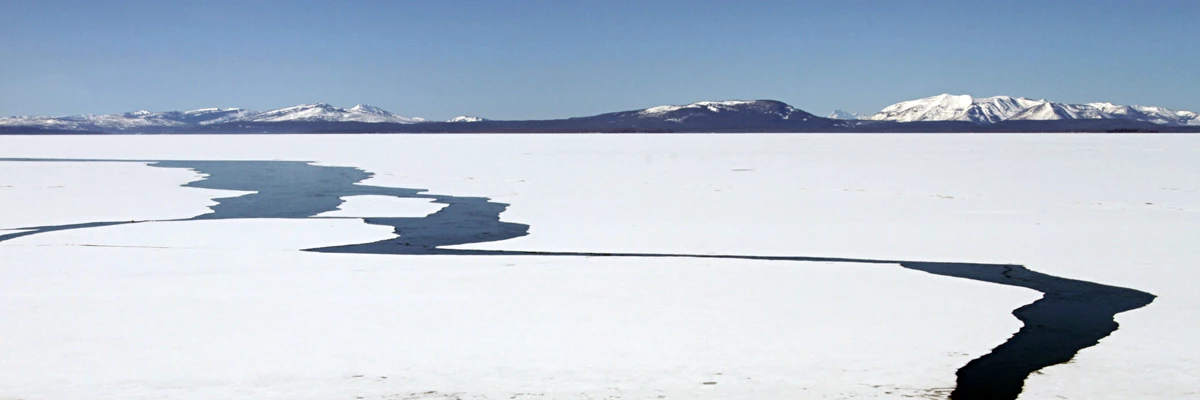
NPS / Jim Peaco The Greater Yellowstone Ecosystem is a complex region, encompassing approximately 58,000 square miles and 14 mountain ranges. Weather varies greatly across steep elevational changes, bringing snowfall to some areas, and warm, dry conditions to others. This dynamic system has provoked the curiosity of researchers for a long time. Across Space and TimeSpace and time are critical to the evaluation of real-world data, and every study defines their parameters differently. This can make it difficult to get a sense of what is actually occurring. Climate summaries over longer periods of time and across larger areas tend to mask local extremes. Conversely, a continuously changing set of short-term reference averages (weather “normals”) could unintentionally obscure the long-term magnitude of change. It is important to look at climate information across many scales and to use available data and models to arrive at reasonable answers to our questions about how climate has changed, how those changes will affect the park, and what impacts we may be able to anticipate in the future. Analyzing smaller areas within the Greater Yellowstone Ecosystem (GYE), say in Yellowstone National Park or on the Northern Range, poses specific challenges. Small regions have fewer actual monitoring stations to feed data to computer models and gridded weather data is often used to fill in the gaps. As a consequence, small-area analyses may not be as accurate. Local field observations from stream gauge and weather stations can be used to verify some of the observed trends, and to describe local conditions to which the ecological system may be responding. This “ground-truthing” allows researchers to arrive at reasonable conclusions about ecological activity. Temperature and PrecipitationGlobal temperature is the master force affecting climate. Everything else that climate affects—sea level rise, growing season, drought, glacial melt, extreme storms—is driven by changes in temperature. Weather stations have been maintained within the GYE since 1894, resulting in some of the longest running records of temperature and precipitation anywhere in the United States. These days, increasingly sophisticated satellite technology as well as data sets yielded by the science of climate modeling, also help climate experts and park managers assess the current situation in the GYE across several scales. There is evidence that climate has changed in the past century and will continue to change in the future. Researchers looking at annual average temperatures report an increase of 0.31°F/decade within the GYE, consistent with the continuing upward trend in global temperatures. Recent studies show mean annual minimum and maximum temperatures have been increasing at the same rate of 0.3°F/decade for the GYE. Conditions are becoming significantly drier at elevations below 6,500 ft. In fact, the rise in minimum temperatures in the last decade exceeds those of the 1930s Dust Bowl Era. Future Temperature and PrecipitationAll global climate models predict that temperatures in the GYE will continue to increase. Projections of future precipitation vary based on differing scenarios that account for future levels of greenhouse gas emissions, which depend upon economic, policy, and institutional improvements, or lack thereof. Any potential increases in precipitation that may or may not occur will be overwhelmed by temperature increases. Considering the most recent trends in which warmer temperatures have been exacerbating drought conditions during the summers, a warmer, drier future for the GYE appears likely in the coming decades. By the latter part of the 21st century, the hot, dry conditions that led to the fires of 1988 will likely be the norm, representing a significant shift from past norms in the GYE toward the type of climate conditions we currently see in the southwestern United States. 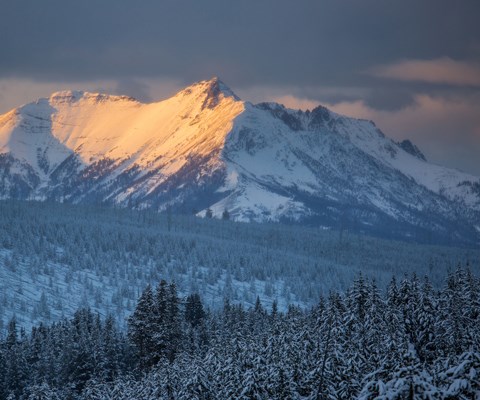
NPS / Neal Herbert Snowpack and Snow CoverSnowmelt in the alpine areas of the Rocky Mountains is critical to both the quality and quantity of water throughout the region, providing 60–80 percent of streamflow in the West. Throughout the GYE, snow often lingers into early summer at high elevations. Each year, a large spike in water flow occurs when snow starts to melt at lower elevations, usually in late February and early March. Peak flow is reached when the deep snow fields at mid and high elevations begin to melt more quickly, typically in June. Minimum flow occurs during winter when all the previous year’s snow has melted, temperatures have dropped, and precipitation comes down as snow instead of rain so only water flowing from underground sources can supply the streams. By contrast, the proportion of stream flow due to rain storms is significantly lower than the contributions of snow melt. Climate change is expected to affect both snow accumulation and rate of spring melt. In some places, warmer temperatures will mean more moisture falling as rain during the cooler months and the snowpack melting earlier in the year. The reduction in snowpack is most pronounced in spring and summer, with an overall continued decline in snowfallprojected for Yellowstone over the coming decades. The Yellowstone, Snake, and Green rivers all have their headwaters in Yellowstone. As major tributaries for the Missouri, Columbia, and Colorado rivers, they are important sources of water for drinking, agriculture, recreation, and energy production throughout the region. A decrease in Yellowstone’s snow will affect millions of people beyond the boundaries of the GYE who depend this critical source of water. Future Snowpack and Snow CoverThe interaction between snowpack, temperature, and precipitation involves a complex interchange between heat and light. Warming temperatures increase evaporation; increased moisture in the air could lead to more snowfall and cloud cover. The increased cloud cover could block additional heat from reaching the surface of the earth resulting in cooler temperatures below. However, increased temperature could possibly limit snowfall instead—by converting it to rain or by melting snow rapidly once it falls, thereby driving snowlines further up the mountains. Recently modeling work indicates that snowpack will almost certainly decline in the long-term. Changes in the area covered by snow are especially important as snow reflects more solar radiation out to space (albedo) than bare ground and tends to keep the surface cool. When land is exposed, sunlight is absorbed by the surface of the earth. This raises the overall surface temperature, which leads to more melting and less snowcover. 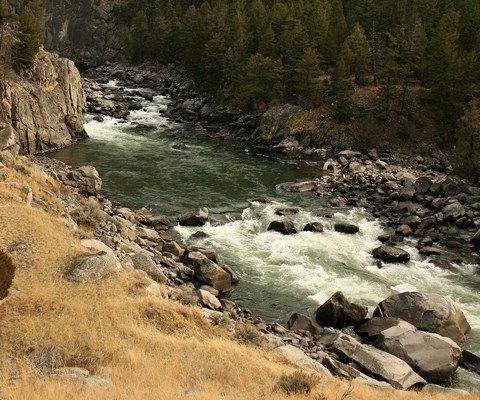
NPS / Jim Peaco Stream Flow and Water TemperatureGlaciers, snowpack, and rainfall produce water that flows through streams, lakes and rivers, and these waterways are critical to life. Analyses of streams during 1950–2010 in the Central Rocky Mountains, including those in the GYE, show an 89% decline in stream discharge. Reduced flows were most pronounced during the summer months, especially in the Yellowstone River. In addition, stream temperatures have changed across the range of the Yellowstone, with a warming of 1.8°F (-16.8°C) over the past century. Continued warming could have major implications to the management and preservation of the many aquatic resources we have today. Changes in volume and timing of spring runoff may disrupt native fish spawning and increase nonnative aquatic species expansion. Growing SeasonThe Intergovernmental Panel on Climate Change (IPCC) predicts that overall forest growth in North America will likely increase 10–20% as a result of extended growing seasons and elevated CO2 during the next century but with important spatial and temporal variations. Forests in the Rocky Mountain/Columbia Basin region are expected to have less snow on the ground, a shorter snow season, a longer growing season due to an earlier spring start, earlier peak snowmelt, and about two months of additional drought. Despite a longer growing season, Yellowstone forests will likely be less dense, more patchy, and have more diverse age structure. In fact, experts project less tree cover in much of the park as well as potential migration of new species like Ponderosa pine. Complicating matters, increased drought stress and higher temperatures may increase the likelihood of widespread die-offs of some vegetation. The integrated runoff response from the Yellowstone River has been toward earlier spring runoff peaks, which suggests that the majority of the park is experiencing shorter winters and longer summers as a result of snowpack changes. Changes in these seasonal patterns will likely disrupt vegetation growth and development, causing plants to bud, flower, fruit and die at different times of the year than they do now. Those changes, in turn, would alter or seriously disrupt wildlife migrations, one of the key resources for which Yellowstone National Park is globally treasured. Extreme Events: Insect ActivityAlthough outbreak dynamics differ among species and various forests, climate change appears to be driving current insect outbreaks. Western spruce budworm outbreaks were more widespread and lasted longer in the 20th century than in the 19th century primarily because of fire suppression and increasing fir populations. However, patterns of spruce budworm outbreaks have been tied to climate nationwide. Summer and spring precipitation are positively correlated with increased frequency of outbreaks over regional scales and long time frames, but experimental evidence suggests that drought may promote infestations. Although bark beetle infestations are a force of natural change in forested ecosystems, several concurrent outbreaks across western North America are the largest and most severe in recorded history. From 2004 to 2008, the area of mountain pine beetle outbreaks increased across Wyoming from 1,000 to 100,000 acres. At the end of 2016, 26% of whitebark pine trees in the GYE had been killed as a result of mountain pine beetle, whitepine blister rust, wildland fire, and other factors. Since 1999, an eruption of mountain pine beetle events has been observed that exceed the frequencies, impacts, and ranges documented during the last 125 years. Aerial assessment of whitebark pine species populations within the GYE has indicated a 79% mortality rate of mature trees. These changes may be early indicators of how GYE vegetation communities will shift due to climate change. These outbreaks of bark beetles in the West have coincided with increased temperatures and changes in precipitation patterns, suggesting a response to a changing climate. Warming temperatures and the loss of extreme cold days reduce winter overkills of insects, speed up life cycles, modify damage rates, and lead to range expansions, particularly in the north. Future Insect ActivityClimate change, and particularly warming, will have a dramatic impact on pest insects, and the recent trends of increasing outbreaks are expected to worsen. The greatest increase in mountain pine beetle outbreaks is expected to occur at high elevations, where models predict warmer temperatures will increase winter survival. At low elevations, however, mountain pine beetle populations may decrease as warmer temperatures disrupt the insects’ seasonality. Climate change will also alter host susceptibility to infestation. Over the short-term, trees will likely increase in susceptibility to pests due to stress from fires, drought, and high temperatures; over the long-term, these stresses will cause tree ranges and distributions to change. Moreover, climate change and changes in CO2 and ozone may alter the conifers’ defensive mechanisms and susceptibility to beetles through their effects on the production of plant secondary compounds. Insect infestations are damaging millions of acres of western forests and there is clear evidence that damage is increasing. Nonetheless, future predictions of the extent of infestations remain uncertain because our understanding of insect infestations is incomplete. Key uncertainties include the influence of drought and precipitation changes, how altered forest/host composition will alter outbreaks, the biochemical response of trees and evolution of defensive mechanisms, regional differences, and the interactive effects of fire, plant disease, and insect outbreaks. 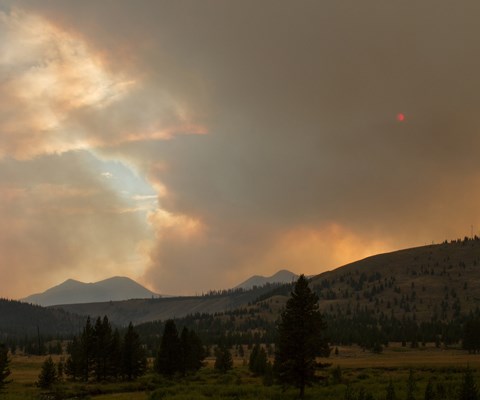
NPS / Jim Peaco Extreme Events: Fire ActivityThe increasing frequency of warm spring and summer temperatures, reduced winter precipitation, and earlier snowmelt in the West during the last 20 years has led to an increase in the frequency of very large wildfires and total acres burned annually. The relative influence of climate on fire behavior varies regionally and by ecosystem type, but generally current-year drought, low winter precipitation, wind conditions, and high summer temperature are determining factors for area burned in the Rockies. Fire dynamics have been altered by climate indirectly through its effects on insect infestations and forest health. By changing the forest environment, bark beetles can influence the probability, extent, and behavior of fire events, but despite the widely held belief that bark beetle outbreaks set the stage for severe wildfires, few scientifically and statistically sound studies have been published on this topic. That fire promotes beetle infestations is clearer; the fire-caused injury changes conifers’ volatile emissions, increasing their susceptibility to bark beetles. Future FiresMost evidence suggests that climate change will bring increases in the frequency, intensity, severity, and average annual extent of wildland fires. Models project that numerous aspects of fire behavior will change, including longer fire seasons, more days with high fire danger, increased natural ignition frequency and fire severity, more frequent large fires, and more episodes of extreme fire behavior. The best evidence is for increases in the average annual area burned. However, the charcoal in lake sediment cores is telling a different story in Yellowstone. These records extend back 17,000 years, and were taken from Cygnet Lake on the Central Plateau. Charcoal from 8,000 years ago, when temperature increases equal what we are now experiencing, shows more frequent but smaller fires than today. Projecting the influences of climate change on future patterns of fire is extremely difficult. Fuels, along with fire weather, determine fire size and severity: the stand-replacing fires of today open up the forests where stands have been burned, limiting fuels for the next fire. As a result, areas with frequent fires also tend to have small fires. Other factors, such as increases in non-native, annual grass invasions, may alter fire dynamics, making predictions based on climate alone difficult. 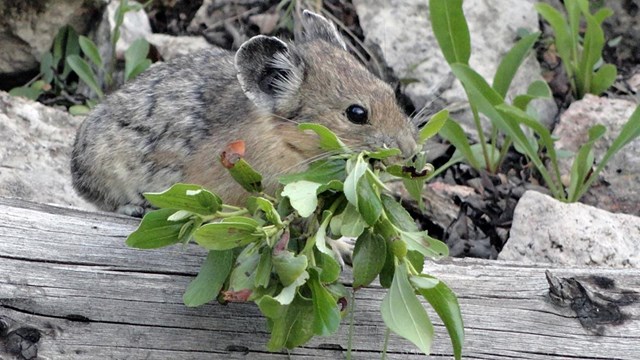
Climate Change
Yellowstone's climate is changing. A continued rise in temperature will fundamentally alter the ecosystem. 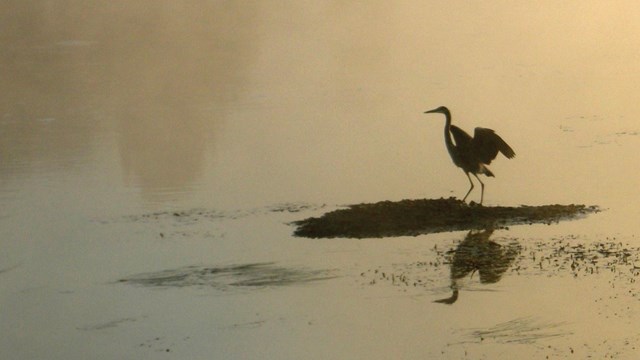
Examining the Evidence
Climate change is predicted to cause birds to shift their range, migratory patterns and timing, and interfere with reproduction. 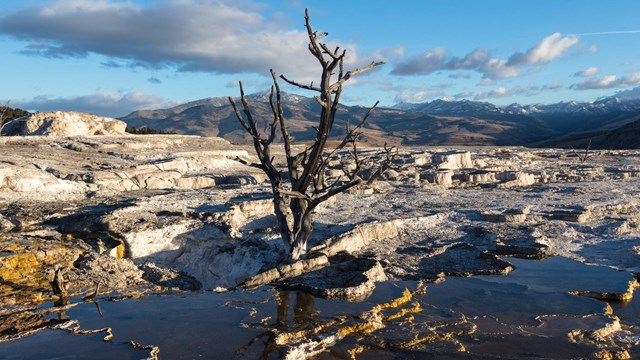
Climate Change Explorer
The Climate Change Explorer is a tool that compares past averages to future predictions for variables in the Greater Yellowstone Area. 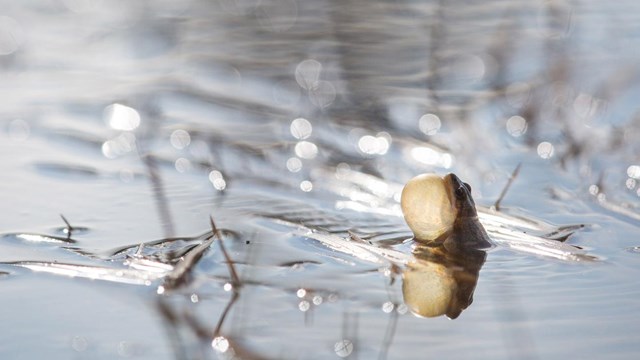
Greater Yellowstone Network
The Greater Yellowstone Network is one of 32 National Park Service Inventory and Monitoring networks that operate across the nation. 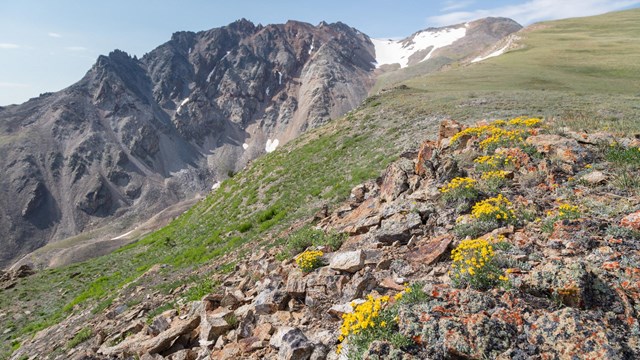
GLORIA
Global Observation Research Initiative In Alpine Environments (GLORIA) is a world-wide long-term monitoring network with sites in the park. |
Last updated: April 18, 2025
